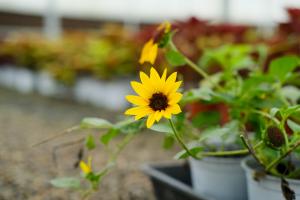How Do Water Lilies Plants Reproduce?
Water lilies are among the most beautiful and enchanting plants found in the world. Their ornamental flowers and breathtaking leaves adorns water bodies such as ponds, lakes, and streams, adding aesthetic value to the environment. Have you ever wondered how these alluring plants reproduce? Let’s dive into the captivating reproductive process of water lilies.
The Anatomy of Water Lilies
The anatomy of water lilies is an exciting subject to study. It helps us to understand the reproductive process better. Water lilies consist of leaves, flowers, stems, and roots. The roots of water lilies are underneath the plant, and they absorb nutrients from the water. The stems and leaves float on the surface of the water, while the flowers come out of the water. The reproductive organs of water lilies are situated within the flowers.
Sexual Reproduction
Water lilies undergo sexual reproduction. They have both male and female reproductive organs situated in the same flower. The male and female parts of the flower do not mature at the same time, so self-fertilization is rare. When the conditions are right, the flowers release a scent to attract pollinators such as bees, butterflies, and moths. Cross-pollination occurs when pollinators transfer pollen from one plant to another.
Asexual Reproduction
Asexual reproduction also occurs in water lilies. This type of reproduction does not involve the production of seeds. Instead, water lilies reproduce asexually through vegetative propagation. This happens when the plant forms new plantlets, which grow from the parent plant. These plantlets then separate from the parent plant, grow roots and become independent plants.
Vegetative Propagation
Vegetative propagation in water lilies occurs through several means. One way is by rooting the plant's runner stems into the soil, which develop into new plants. Secondly, they reproduce by forming adventitious roots from their rhizomes, which later produce new leaves and stems. Thirdly, water lilies produce new plants by rooting sections of their leaves, which are detached from the parent plant and allowed to grow new roots before planting in the soil.
Closing Remarks
In conclusion, water lilies are excellent examples of plants that reproduce both sexually and asexually. Sexual reproduction occurs when pollinators transfer pollen from one flower to another, while asexual reproduction occurs through vegetative propagation, where new plantlets grow from the parent plant. Understanding the reproductive process of water lilies can help us care for them better, and appreciate the beauty they bring to our water bodies.

 how many times do yo...
how many times do yo... how many planted tre...
how many planted tre... how many pine trees ...
how many pine trees ... how many pecan trees...
how many pecan trees... how many plants comp...
how many plants comp... how many plants can ...
how many plants can ... how many plants and ...
how many plants and ... how many pepper plan...
how many pepper plan...
































